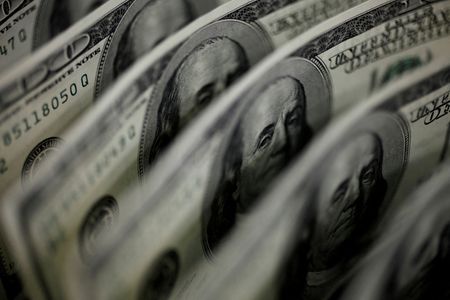By John McCrank
NEW YORK (Reuters) – U.S. money market fund assets hit a new record of $5.8 trillion this week as yield-hungry investors continued to turn to the short-term debt securities – a stark contrast to the 2011 debt- ceiling standoff when there were large outflows from the funds.
Money market mutual funds – a key source of short-term corporate and municipal funding – have enjoyed $614.8 billion in net inflows so far this year, with $48 billion of those in the past week as of Monday, according to Crane Data.
The influx comes despite growing concerns that the White House and Republican lawmakers may not reach a compromise to raise the $31.4 trillion debt ceiling ahead of a June 1 deadline, pushing the country into a devastating default.
Although money market funds are considered safe havens, they have experienced runs during previous crises and government officials and ratings agencies have warned they may continue to be vulnerable to rapid redemptions in times of stress.
In 2008, the collapse of Lehman Brothers sparked a run on money market funds, which also experienced severe stress in March 2020 as COVID-19 shut down the economy. Both episodes led the government to backstop the sector and to review its rules.
And in the week leading up to the 11th-hour 2011 debt- ceiling deal, which caused Standard & Poor’s to downgrade the U.S. credit rating for the first time, investors pulled $66 billion out of money market funds, which at the time held around $2.6 trillion, according to the Investment Company Institute. Investors moved much of the cash into bank deposits.
But this time there are several key differences buoying the sector. Those include higher interest rates, with money market funds today offering yields of as much as 5% compared with bank products which generally yield less than 1%. Recent bank failures have also prompted investors to move cash from bank accounts to money funds, said Crane Data President Peter Crane.
“In 2011 you had weakness in money funds anyhow, whereas now you have assets hitting record levels,” he said. “The tide was going out then and now the cash tide is rising, or is high, and it would take a lot more to reverse that.”
Money market funds that invest in Treasuries – money funds invest in high-quality, liquid, short-term debt, including Treasuries, government agency debt and corporate securities – are also avoiding exposure to Treasury bills that mature in June, said Crane.
“That’s the sort of kryptonite that people are staying away from,” he said.
(Reporting by John McCrank in New York; Editing by Michelle Price and Matthew Lewis)





